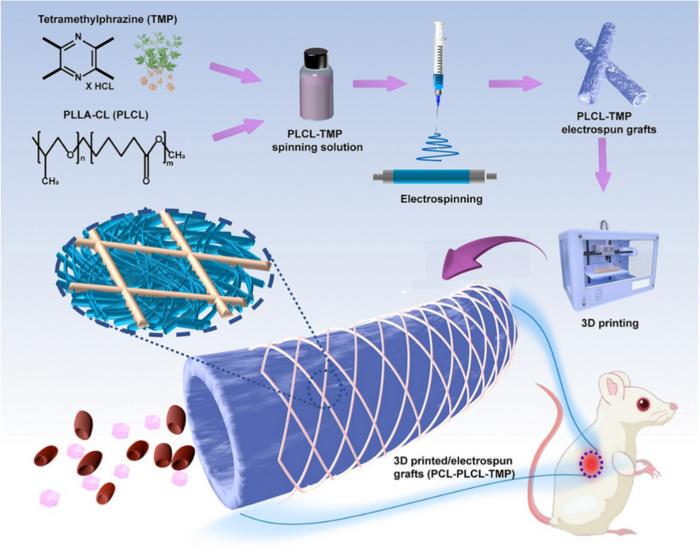A new study has introduced 3D printed electrospun vascular grafts to reduce thrombosis and control aneurysmal dilatation after surgery. This development could improve treatments for cardiovascular diseases.
Cardiovascular disease, responsible for over 18 million deaths annually, often necessitates vessel replacement. Autologous vessels are limited, and current grafts face challenges such as thrombosis and aneurysmal dilatation. Researchers from Donghua University and Shanghai Jiao Tong University have developed a novel solution. Their study, published in Burns & Trauma, details 3D printed electrospun vascular grafts loaded with tetramethylpyrazine (TMP).

The grafts combine electrospinning and 3D printing technologies. The inner layer is made of electrospun poly(L-lactic-co-caprolactone) (PLCL) nanofibers, while the outer layer consists of 3D printed polycaprolactone (PCL) microfibers. This dual-layer design ensures mechanical stability and flexibility. TMP, derived from the traditional Chinese medicine Ligusticum chuanxiong, provides antiplatelet and anticoagulant properties.
In vitro tests have shown that the grafts effectively reduced platelet adhesion and demonstrated good cytocompatibility with human umbilical vein endothelial cells. In vivo experiments with rat abdominal aortas indicated excellent biocompatibility and mechanical strength over six months. The grafts maintained patency without acute thrombosis or significant aneurysmal dilatation.
Further research will focus on long-term results in larger animal models and exploring the molecular mechanisms involved. You can read the full research paper in the Burns & Trauma journal, at this link.

